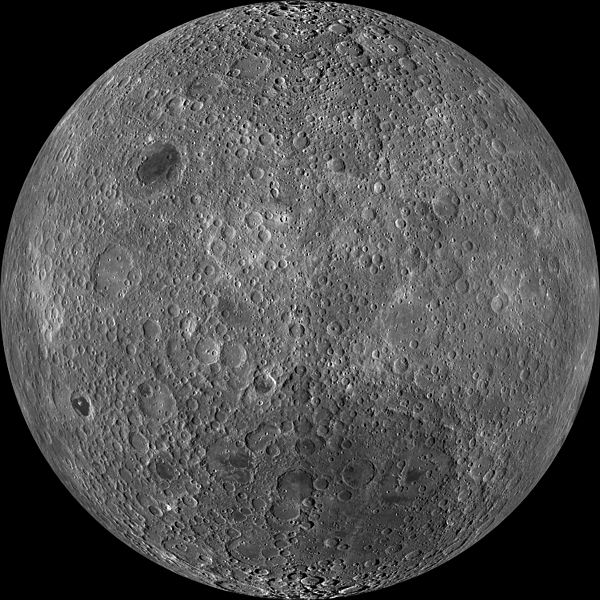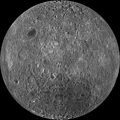Tiätuvuárkká:Moon Farside LRO.jpg

Munekejâdem stuárudâh: 600 × 600 kovečuággá. Eres resoluutioh: 240 × 240 kovečuággá | 480 × 480 kovečuággá | 768 × 768 kovečuággá | 1 024 × 1 024 kovečuággá | 2 048 × 2 048 kovečuággá | 18 000 × 18 000 kovečuággá.
Algâalgâlâš tiätuvuárkká (18 000 × 18 000 kovečuággá, 85,34 MiB, MIME-tijppâ: image/jpeg)
Tiätuvuárhá historjá
Peeivi colkkâlmáin uáináh, maggaar tiätuvuárkká lâi eidu talle.
| Peivimeeri/Tijme | Miniatyyrkove | Ooláádmudoh | Kevttee | Komment | |
|---|---|---|---|---|---|
| táálááš | 20. njuhčâmáánu 2014 tme 02.47 |  | 18 000 × 18 000 (85,34 MiB) | Huntster | High resolution mosaic. |
| 9. cuáŋuimáánu 2011 tme 07.12 |  | 1 600 × 1 600 (1,44 MiB) | Bubba73 | {{Information |Description ={{en|1=Far side of the Moon, by NASA's Lunar Recon. Orbiter}} |Source =http://apod.nasa.gov/apod/image/1104/farside_lro1600.jpg |Author =NASA - LRO |Date =2011? |Permission = |other_versions = } |
Tiätuvuárhá kevttim
Taat tiátuvuárkká ij kevttuu mongin siijđost.
Tiätuvuárhá kevttim ubâ systeemist
Čuávuvááh eres wikih kevttih taam tiätuvuárhá.
- Kiävttu saajeest af.wikipedia.org
- Kiävttu saajeest az.wikipedia.org
- Kiävttu saajeest be.wikipedia.org
- Kiävttu saajeest bjn.wikipedia.org
- Kiävttu saajeest bn.wikipedia.org
- Kiävttu saajeest bs.wikipedia.org
- Kiävttu saajeest ca.wikipedia.org
- Kiävttu saajeest cs.wikipedia.org
- Kiävttu saajeest de.wikipedia.org
- Kiävttu saajeest en.wikipedia.org
- Kiävttu saajeest en.wikibooks.org
- Kiävttu saajeest en.wikiversity.org
- Solar System, technical/Moon
- User:Marshallsumter/Radiation astronomy2/Visuals
- Draft:Original research/Planets
- User:Marshallsumter/Radiation astronomy2/Visuals/Quiz
- User:Marshallsumter/Rocks/Rocky objects/Astronomy
- User:Marshallsumter/Radiation astronomy/Courses/Principles/Hourly 2
- User:Marshallsumter/Radiation astronomy/Courses/Principles/Midterm quiz
- User:Marshallsumter/Radiation astronomy/Courses/Principles/Final quiz
- Titan/Quiz
- User:Marshallsumter/Rocks/Rocky objects
- Draft:Enceladus/Quiz
- Moon/Quiz
- Stars/Sun/Heliology/Quiz
- Earth/Quiz
- Stars/Reds/Quiz
- Draft:Dione/Quiz
- User:Marshallsumter/Radiation astronomy2/Scattered disks/Quiz
- User:Marshallsumter/Radiation astronomy1/Kuiper belts/Quiz
- Liquids/Liquid objects/Moon
- User:Marshallsumter/Radiation astronomy/Craters
- Kiävttu saajeest es.wikipedia.org
- Kiävttu saajeest et.wikipedia.org
Čääiti lase taan tiätuvuárhá vuáhádâhvijđosii kiävtu.


